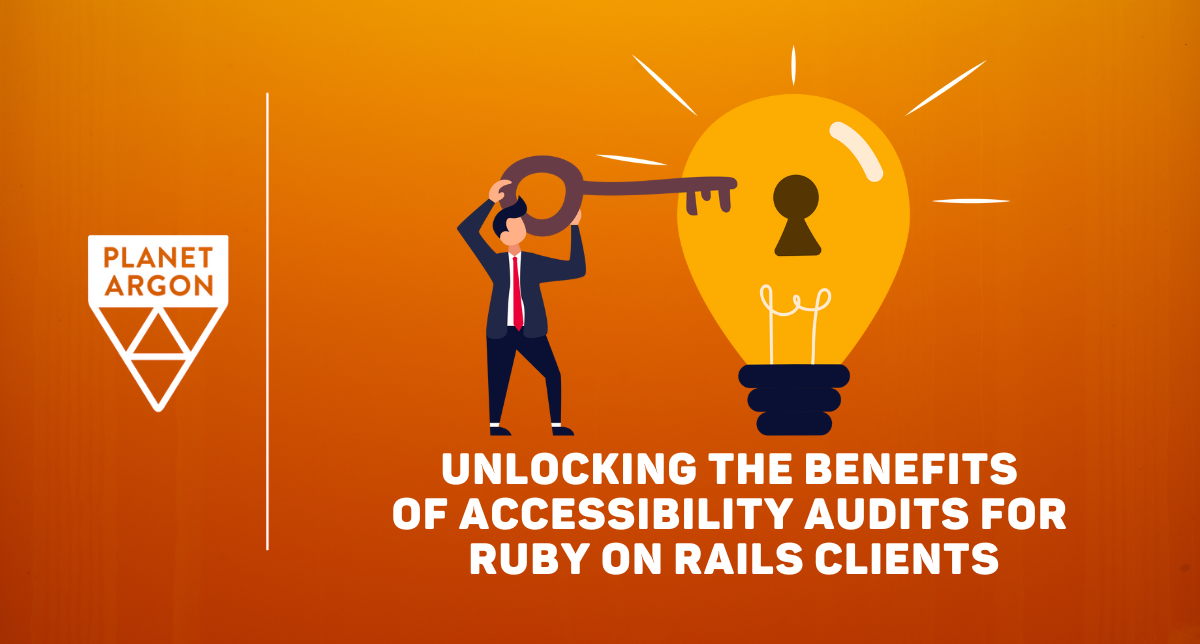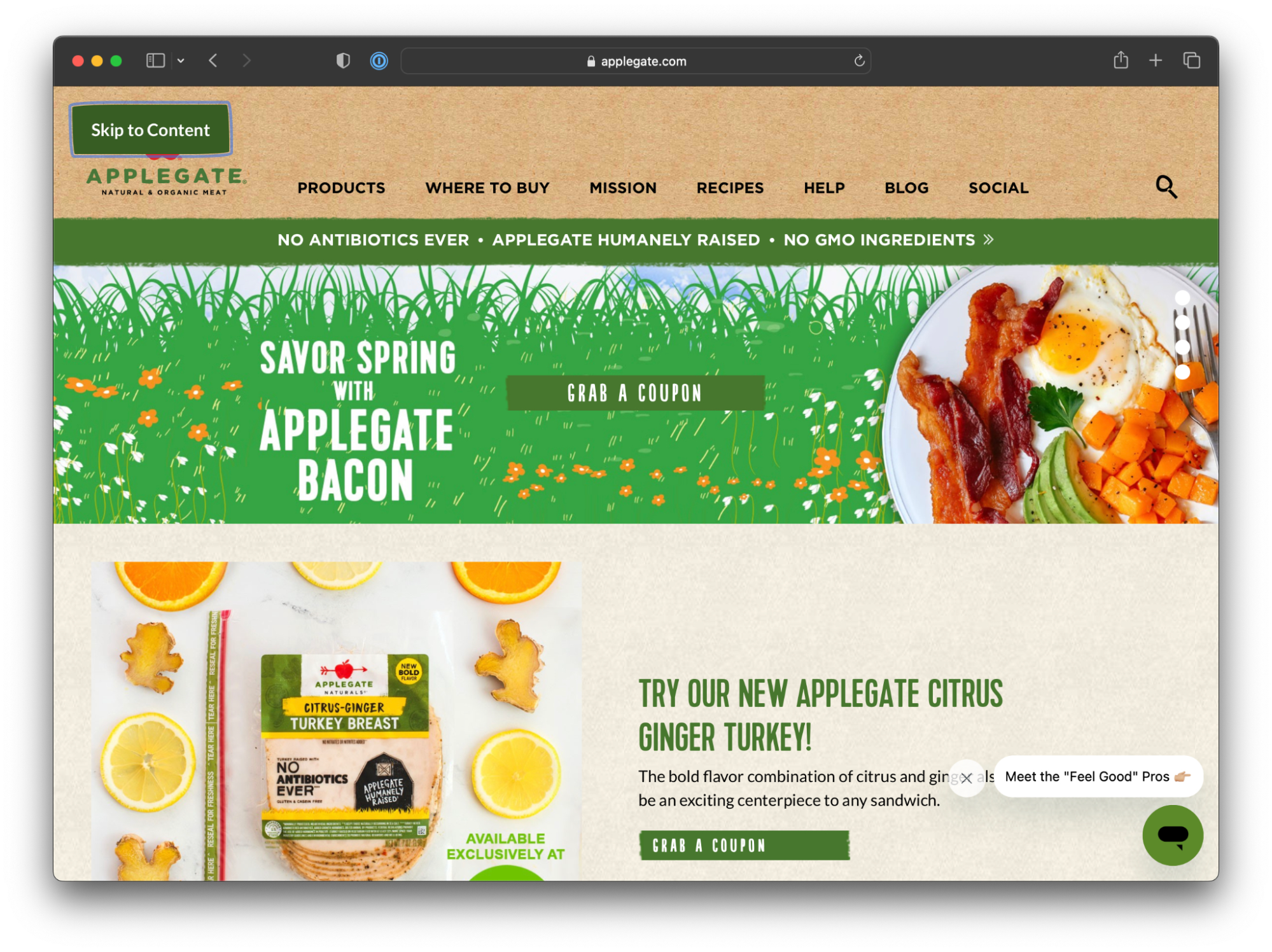Unlocking the Benefits of Accessibility Audits for Ruby on Rails Clients
Reading time: ~ 5 minutes

Accessibility audits are not only for organizations that deal primarily with a disabled audience. According to the United States Census Bureau, as of 2020, an estimated 61 million people in the United States have a disability, which is approximately 1 in 4 adults. This includes people with physical, sensory, and cognitive disabilities. Knowing that, you can expect that 1 in 4 of your customers will benefit from any accessibility improvements you make to your application or website. So what might be standing in your way from making this a reality?
Barriers that may be preventing you from investing time in an accessibility audit?
You might be thinking now’s not the time for an accessibility audit for a number of reasons.
Cost: Maybe you’re hesitant to invest in an audit due to budget constraints or because it's not a priority.
Lack of awareness: It could be that your team isn’t aware of the importance of accessibility or the legal requirements for accessibility compliance. They may also not understand the benefits of an accessibility audit and how it can improve your application.
Fear of negative feedback: An accessibility audit may uncover significant accessibility issues that need to be addressed. You might be anxious about uncovering these issues and potentially receiving negative feedback.
Lack of time and resources: Addressing accessibility issues identified in an audit can be time-consuming and require resources, including technical expertise and financial investment. If you don’t have the time or resources available to address the issues, you may be hesitant to invest in an audit in the first place.
Misconceptions about accessibility: Some organizations may have misconceptions about accessibility, including a belief that it's only relevant to a small subset of users or that it's too difficult to implement.
5 Ways our clients have benefitted from an accessibility audit
We inherit a lot of legacy applications. In reviewing these apps, many times, we see accessibility only partially supported or completely ignored. It is understandable that accessibility is not front of mind for many clients or developers. However, that does not mean that it isn’t valuable for your users. Here are some examples of how it can benefit everyone’s experience on your website or app.
1. Inclusive User Experience
Accessibility audits ensure that websites and applications are usable by people with disabilities, such as visual impairments, hearing impairments, and motor disabilities. By making your application more accessible, the user experience will be improved for everyone, making your corner of the internet a more inclusive place for everyone.
For example, we are all familiar with the basic structure of a website. It usually includes the company’s logo and a list of navigation links in the header area of the site. Most of us glaze right over this section of the site and quickly move down to the part we want to interact with. However, a visually impaired person might not be able to quickly skim past all this information if they are browsing through your site with a screen reader. They might have to go through it every time they load a new page on your website.
To help these users quickly skip to the content of your website, you can implement a ‘Skip to Content’ button that is only accessible when a person ‘tabs’ into your site with the Tab key. This button will never be displayed to anyone unless they are tabbing through your site. So this does not impact the visual presentation of your website and only benefits those who need it. We implemented this on Applegate’s site and it looks like this when it is accessed via the tab key.

This is just one example of how increased attention to accessibility can benefit your users.
2. Increased Reach and Marketability
With increased attention to accessibility, your application can reach a wider audience broadening its potential user base and marketability. Remember that any accessibility improvement can potentially benefit all of your users. This includes people with short-term disabilities, like a broken arm, and long-term disabilities, like permanent blindness, and even able-bodied users.

3. Compliance with Accessibility Laws and Regulations
Many countries have laws and regulations that require websites to be accessible to people with disabilities. For example, in the United States, the Americans with Disabilities Act (ADA) also includes website accessibility. ADA outlines that a website must be accessible and usable by individuals with disabilities if it is for use by the public. We can help ensure compliance with these laws and regulations, reducing the risk of legal issues and penalties.
4. Improved Search Engine Optimization (SEO)
Many accessibility features are met by using standardized HTML markup. An accessibility audit will make sure your site is marked up with proper headings and text elements. It will also make sure images are properly labeled with alt tags and links and buttons have understandable text as to what their actions will produce. All of this will help search engines properly index your site while also helping people use your site.
5. Positive Reputation
Making your website accessible demonstrates your commitment to inclusivity and social responsibility, which enhances a company's reputation and brand image. It can also help create a positive perception among customers and stakeholders. Customers who may routinely run into accessibility roadblocks on competitors' websites will appreciate the time and energy spent to make your website accessible and may encourage them to return as they know they will have a positive experience on your website.
One of our clients was excited about the outcome of their accessibility audit because their parent company was pushing for accessibility improvements on the parent company’s site. So this client was thrilled to be able to report back to the higher management that their website had already gone through an accessibility audit and many of the most important updates were already completed.
Who Should You Hire to Run an Accessibility Audit?
There are a lot of companies and professionals that specialize in providing accessibility audits and testing services you can hire.
When looking for someone to conduct an accessibility audit, it's important to find an organization that has experience in conducting audits and has a thorough understanding of accessibility guidelines and standards. You may want to look for a company that is familiar with the specific accessibility needs of your audience.
It's important to ensure that the company you hire uses reliable tools and methods for testing accessibility and can provide you with a detailed report of their findings and recommendations for improvement.
The best-case scenario would be to hire an organization that is already familiar with your website and service. If, for example, you already partner with Planet Argon on your project, it would be a natural fit for us to work on an accessibility audit for your website or application. We would already be very familiar with your project and would be able to get up to speed faster than someone brought in fresh. If you happen to be on a monthly maintenance retainer with us, we can easily make tickets to implement your accessibility improvements on an ongoing basis. These types of improvements do not need to happen all at once.
One last thing…
An audit is only the first step in improving accessibility. It's important to create a plan to address the issues identified in the audit and to ensure accessibility compliance, which may require additional resources and support. It is also important to pay attention to accessibility going forward and to build it into any new features you add to your website. The best way to avoid accessibility issues is to create features that are accessible in the first place. 🙂
Once your audit is done and the most important issues are fixed, you will be able to sleep easy at night knowing that your website is easily usable and accessible to all your customers.